Oxytocin
Synonym(s):α-Hypophamine;Oxytocic hormone
- CAS NO.:50-56-6
- Empirical Formula: C43H66N12O12S2
- Molecular Weight: 1007.19
- MDL number: MFCD00076731
- EINECS: 200-048-4
- SAFETY DATA SHEET (SDS)
- Update Date: 2024-12-20 19:50:36
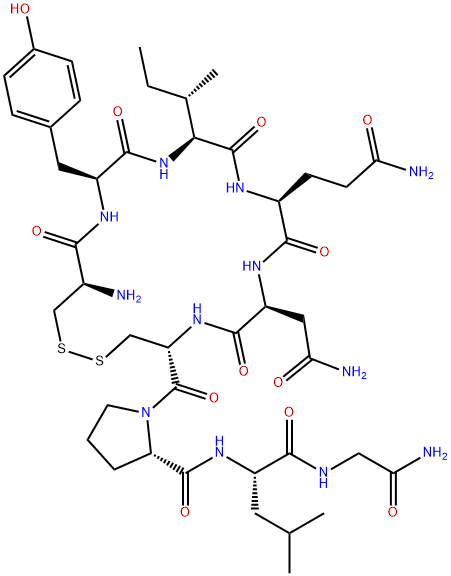
What is Oxytocin?
Description
Oxytocin is a peptide hormone containing nine amino acids secreted and synthesized by the paraventricular and supraoptic nuclei of the hypothalamus and stored and released by the neurohypophysis. It acts in females by inducing uterine contractions during parturition and stimulating milk ejection by the mammary glands. No actions in males are known. Synthetic derivatives of oxytocin are used to induce labor and for therapeutic abortions. In recent years the safety of oxytocin has been greatly enhanced by the use of continuous maternal and fetal monitoring and by the use of controlled intravenous infusion of the drug.
Description
Oxytocin is a polypeptide secreted by the posterior pituitary gland of mammals. It has several hormonal functions, including contraction of the uterus during labor, lactation stimulation, and possibly orgasm. H. H. Dale discovered ocytocin’s biological properties in 1906; V. du Vigneaud received the Nobel Prize in chemistry in 1955 for isolating and synthesizing it. Synthetic oxytocin is sold under the trade names Pitocin and Syntocinon (and as a generic drug) for inducing labor.
Chemical properties
Oxytocin is a white to yellowish brown powder, hygroscopic, easily soluble in water. It is a synthetic cyclic nonapeptide having the structure of the hormone produced by the posterior lobe of the pituitary gland that stimulates contraction of the uterus and milk ejection in receptive mammals.
Originator
Syntocinon,Sandoz,US,1957
The Uses of Oxytocin
Oxytocin is the principal uterus-contracting and lactation-stimulating hormone of the posterior pituitary gland.
The Uses of Oxytocin
Oxytocin is used as a peptide hormone that acts predominantly as a neurotransmitter; stimulates uterine contraction and lactation, increases Na+ excretion; stimulates myometrial GTPase and phospholipase C.
The Uses of Oxytocin
Oxytocin is a nonapeptide hormone primarily synthesized in magnocellular neurons of the paraventricular and supraoptic nuclei of the hypothalamus. It is known best for its role in stimulating uterine contraction and lactation and is important for social memory and attachment, sexual and maternal behavior, and aggression. Also, it has been implicated in various non-social behaviors, including learning, anxiety, feeding, and pain perception.
Definition
ChEBI: Oxytocin is a cyclic nonapeptide hormone with amino acid sequence CYIQNCPLG that also acts as a neurotransmitter in the brain; the principal uterine-contracting and milk-ejecting hormone of the posterior pituitary. Together with the neuropeptide vasopressin, it is believed to influence social cognition and behaviour. It has a role as an oxytocic and a vasodilator agent. It is a peptide hormone and a heterodetic cyclic peptide.
What are the applications of Application
Oxytocin acetate salt is an Oxytocin receptor activator involved in uterine contraction and lactation.
brand name
Pitocin (Parkdale); Syntocinon (Novartis);Oxytocin;Pituitrin.
Therapeutic Function
Oxytocic
Biosynthesis
Oxytocin is a cyclic nonapeptide that differs from vasopressin by only 2 amino acids. It is synthesized as a larger precursor molecule in cell bodies of the paraventricular nucleus, and to a lesser extent, the supraoptic nucleus in the hypothalamus. The precursor is rapidly converted by proteolysis to the active hormone and its neurophysin, packaged into secretory granules as an oxytocin-neurophysin complex, and secreted from nerve endings that terminate primarily in the posterior pituitary gland. In addition, oxytocinergic neurons that regulate the autonomic nervous system project to regions of the hypothalamus, brainstem, and spinal cord. Other sites of oxytocin synthesis include the luteal cells of the ovary, the endometrium, and the placenta.
General Description
Oxytocin (OXT) is a potent natriuretic hormone encoded by the gene mapped to human chromosome 20p13. It is synthesized along with its carrier protein neurophysin I from its inactive precursor prepro-OXT. OXT gene consists of three exons and two introns, where first exon codes for hormone OXT while other exon codes for neurophysin I.
Health Hazard
Uterine contraction, milk ejection, facilitates sperm ascent in female tract
Decreases membrane potential of myometrium, basic metabolic rate, and liver glycogen
Stimulates oviposition in hen, releases luteinizing hormone (LH)
Increases blood sugar and urinary sodium and potassium
Biochem/physiol Actions
Oxytocin (OXT) and arginine vasopressin hormone plays a vital role in regulation of water excretion, parturition and lactation. OXT has been implicated in hydromineral homeostasis and vascular and cardiac relaxation. Oxytocin might function as an effective therapeutic for psychiatric diseases, including depression, schizophrenia, anxiety disorders, and autism. OXT has a potential as a marker of autism severity. OXT is an anorexigenic neuropeptide, which is implicated in social cognition and obsessive-compulsive behavior. Plasma oxytocin levels are high in children with Prader-willi syndrome (PWS) compared with unrelated and unaffected siblings. Deficiency of OXT hormone might contribute to pathogenesis of attention deficit/hyperactivity disorder (ADHD).
Clinical Use
Oxytocin is a potent uterine stimulant that is used for the induction and augmentation of labor, antenatal fetal assessment, and control of postpartum hemorrhage. If used improperly, oxytocin can lead to such complications as uterine hypercontractility with fetal distress, uterine rupture, maternal hypotension, water intoxication, and iatrogenic prematurity. These complications can almost always be avoided if oxytocin is given in proper dosages and with careful fetal and maternal monitoring.
Safety Profile
Poison by intravenous route. Experimental reproductive effects. Oxytocin is a pituitary hormone which stimulates uterine contraction and milk production. The principal uterus-contracting and lactation-stimulating hormone of the posterior pituitary gland.
Veterinary Drugs and Treatments
In veterinary medicine, oxytocin has been used for induction or enhancement of uterine contractions at parturition, treatment of postpartum retained placenta and metritis, uterine involution after manual correction of prolapsed uterus in dogs, and in treating agalactia.
storage
-20°C (desiccate)
Purification Methods
It is a cyclic nonapeptide which is purified by countercurrent distribution between solvent and buffer. It is soluble in H2O, n-BuOH and isoBuOH. [Bodanszky & du Vigneaud J Am Chem Soc 81 2504 1959, Cash et al. J Med Pharm Chem 5 413 1962, Sakakibara et al. Bull Chem Soc Jpn 38 120 1965; solid phase synthesis: Bayer & Hagenmyer Tetrahedron Lett 2037 1968.] It was also synthesised on a solid phase matrix and finally purified as follows: A Sephadex G-25 column is equilibrated with the aqueous phase of a mixture of 3.5% AcOH (containing 1.5% of pyridine)/n-BuOH/*C6H6 (2:1:1) and then the organic phase of this mixture is run through. A solution of oxytocin (100mg) in H2O (2mL) is applied to the column which is then eluted with the organic layer of the above mixture. The fractions containing the major peak [as determined by the Folin-Lowry protein assay: Fryer et al. Anal Biochem 153 262 1986] are pooled, diluted with twice their volume of H2O, evaporated to a small volume and lyophilised to give oxytocin as a pure white powder (20mg, 508 U/mg). [Ives Can J Chem 46 2318 1968, Beilstein 22 III/IV 82.]
Properties of Oxytocin
| Melting point: | 192-194°C |
| alpha | D22 -26.2° (c = 0.53) |
| Boiling point: | 1533.3±65.0 °C(Predicted) |
| Density | 1.1086 (rough estimate) |
| refractive index | 1.6700 (estimate) |
| storage temp. | 2-8°C |
| solubility | Very soluble in water. It dissolves in dilute solutions of acetic acid and of ethanol (96 per cent). |
| form | lyophilized powder |
| pka | pKa ~6.1(free amino group on Cys) (Occasionally);~10(free phenol on Tyr) (Occasionally) |
| color | White |
| Water Solubility | Soluble in water. |
| Merck | 13,7049 |
| BRN | 3586108 |
| CAS DataBase Reference | 50-56-6(CAS DataBase Reference) |
Safety information for Oxytocin
| Signal word | Warning |
| Pictogram(s) |
 Skull and Crossbones Acute Toxicity GHS06  Health Hazard GHS08 |
| GHS Hazard Statements |
H300:Acute toxicity,oral H361:Reproductive toxicity |
| Precautionary Statement Codes |
P201:Obtain special instructions before use. P280:Wear protective gloves/protective clothing/eye protection/face protection. P308+P313:IF exposed or concerned: Get medical advice/attention. P405:Store locked up. |
Computed Descriptors for Oxytocin
| InChIKey | DSZOEVVLZMNAEH-BXUJZNQYSA-N |
Oxytocin manufacturer
Piramal Pharma Solutions
New Products
(S)-3-Aminobutanenitrile hydrochloride 4-Methylphenylacetic acid N-Boc-D-alaninol N-BOC-D/L-ALANINOL Tert-butyl bis(2-chloroethyl)carbamate 3-Morpholino-1-(4-nitrophenyl)-5,6-dihydropyridin- 2(1H)-one Furan-2,5-Dicarboxylic Acid Tropic acid 1-Bromo-3,5-Di-Tert-Butylbenzene S-2-CHLORO PROPIONIC ACID ETHYL ISOCYANOACETATE 2-Bromo-1,3-Bis(Dimethylamino)Trimethinium Hexafluorophosphate 4-IODO BENZOIC ACID 3-NITRO-2-METHYL ANILINE 1-(2,4-DICHLOROPHENYL) ETHANAMINE (2-Hydroxyphenyl)acetonitrile 4-Bromopyrazole 2-(Cyanocyclohexyl)acetic acid 4-methoxy-3,5-dinitropyridine 1-(4-(aminomethyl)benzyl)urea hydrochloride 2-aminopropyl benzoate hydrochloride diethyl 2-(2-((tertbutoxycarbonyl)amino) ethyl)malonate tert-butyl 4- (ureidomethyl)benzylcarbamate Ethyl-2-chloro((4-methoxyphenyl)hydrazono)acetateRelated products of tetrahydrofuran

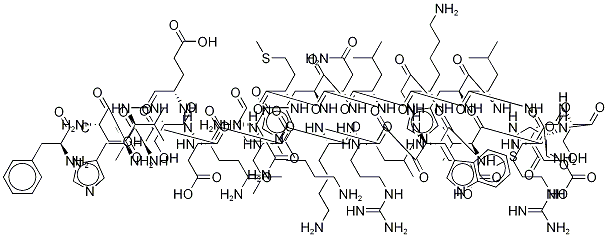

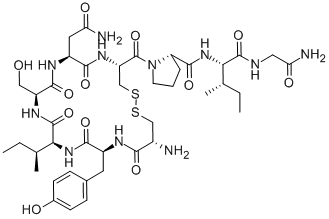

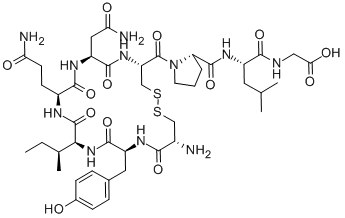
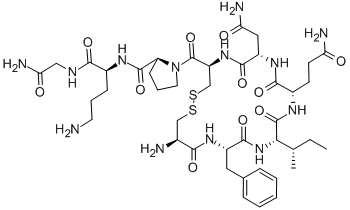
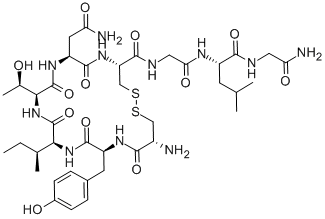
You may like
-
 50-56-6 Oxytocin 99%View Details
50-56-6 Oxytocin 99%View Details
50-56-6 -
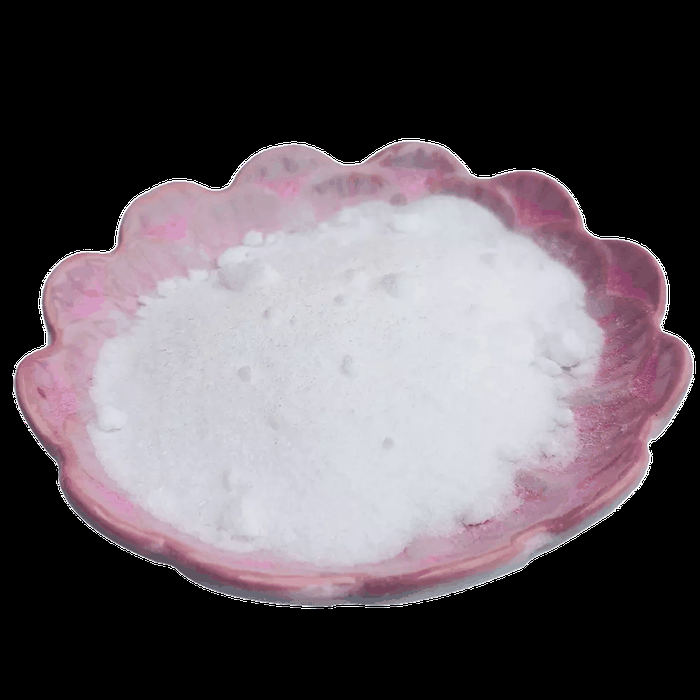 50-56-6 98%View Details
50-56-6 98%View Details
50-56-6 -
 Oxytocin CAS 50-56-6View Details
Oxytocin CAS 50-56-6View Details
50-56-6 -
 1975-50-4 98%View Details
1975-50-4 98%View Details
1975-50-4 -
 2-HYDROXY BENZYL ALCOHOL 98%View Details
2-HYDROXY BENZYL ALCOHOL 98%View Details
90-01-7 -
 2-Chloro-1,3-Bis(Dimethylamino)Trimethinium Hexafluorophosphate 221615-75-4 98%View Details
2-Chloro-1,3-Bis(Dimethylamino)Trimethinium Hexafluorophosphate 221615-75-4 98%View Details
221615-75-4 -
 14714-50-2 (2-Hydroxyphenyl)acetonitrile 98+View Details
14714-50-2 (2-Hydroxyphenyl)acetonitrile 98+View Details
14714-50-2 -
 118753-70-1 98+View Details
118753-70-1 98+View Details
118753-70-1